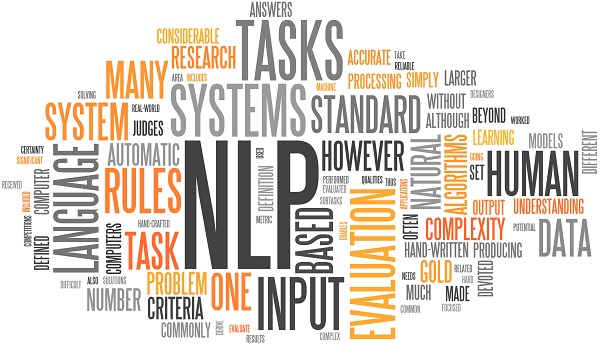15 May Analyzing Semantics
Semantics
 The stratum of semantics is usually associated with meaning. Throughout the 1980s, when I was in college, semantics was viewed as more and more important in text-understanding systems. One aspect of semantics that has received a great deal of attention is thematic or case roles, which can be very useful in defining the roles of words or phrases in a sentence.
The stratum of semantics is usually associated with meaning. Throughout the 1980s, when I was in college, semantics was viewed as more and more important in text-understanding systems. One aspect of semantics that has received a great deal of attention is thematic or case roles, which can be very useful in defining the roles of words or phrases in a sentence.
By their very nature, these roles are intuitively easy to understand. Here are a few examples: AGENT, PATIENT, INSTRUMENT and ACTION. More examples are shown below with borrowed definitions. The agent is the thing that causes the action, thus the agent plays a role, usually as the subject of the sentence. Action is also a role, usually played by a verb (predicate). Because of the context, we can understand which roles are played by the words in any given sentence.
| Understanding Context Cross-Reference |
|---|
| Click on these Links to other posts and glossary/bibliography references |
|
|
|
| Prior Post | Next Post |
| Analyzing Syntax | Discourse Pragmatics |
| Definitions | References |
| semantics meaning | Rumelhart 1986 |
| understanding phrases | Hirst 1987 |
| intuitive context | Soames 1979 |
Semantax
It has long been recognized that the combination of syntax and semantics provides essential information in interpreting language. Since the pairings of linguistic strata are the focus of 3-DG, we need to show what critical information the interaction of syntax and semantics contains for language understanding. The most critical characteristics in this couplet are the function rules for well-formed thematic features. Conceptually, we know that a word or phrase that fills the role of agent, instrument or object must be nominal. Actions are verbs. We can state these simplest of rules as follows:
Agent > Noun Object > Noun Instrument > Noun Action > Verb
This course material at Simon Fraser University identifies the following theta roles:
Theme | Locative | Experiencer | Agent | Wormhole | Experiencer versus agent | Instrument | Possessor | Patient | Constructum | Destructum | Trigger | Location | Goal, Source, and Path | Reason | Purpose | Benefactor
Consequently, if you know the theta role, you can often determine the syntactic function. Knowing the syntactic function can also help resolve theta role so the constraints are bi-directional. Often these may be determined by looking at the natural theta roles or syntactic functions of words as explicitly stored in an ontology.
The PDP group tells us that multiple constraints operate strongly in language processing: “the constraints tend to be reciprocal… they do not run only from syntax to semantics – they also run the other way” (Rumelhart, 1986, p. 6). In the PDP group’s analysis, the syntactic structure of sentences is determined in part by the semantic relations between words in a sentence. “Thus, the influences appear to run both ways, from the syntax to the semantics and from the semantics to the syntax” (ibid, p.7).
A basic component of semantics is theta or thematic role. A basic component of syntax is function. The pairing of these components leads to a parse with results that show both the syntactic functions for all words and the theta roles for each applicable word. In a sentence. Analyzing semantics tells us who did what to whom or what, and possibly which parts of the sentence explain the why and how.
The Role of Semantics
 The role of semantics has been the subject of much debate among computational linguists. The debate has focused on how to use semantic information in parsing natural language text. The approaches range from the far right position, summed up by the rhetorical question, “Who needs semantics?” to the extreme left position: “We have semantics. Who needs anything else?” Fortunately, the majority of the field is somewhere nearer the center. Adherents to compromise positions usually advocate separating syntactic and semantic analyses, completing the syntactic parse before analyzing meaning. Others advocate attempting to integrate the two functions (Hirst, 1987, pp. 3-4).
The role of semantics has been the subject of much debate among computational linguists. The debate has focused on how to use semantic information in parsing natural language text. The approaches range from the far right position, summed up by the rhetorical question, “Who needs semantics?” to the extreme left position: “We have semantics. Who needs anything else?” Fortunately, the majority of the field is somewhere nearer the center. Adherents to compromise positions usually advocate separating syntactic and semantic analyses, completing the syntactic parse before analyzing meaning. Others advocate attempting to integrate the two functions (Hirst, 1987, pp. 3-4).
Case Markers and Theta Roles
In the semantax pairing, the complementary aspect of syntax is theta or thematic role. Theta roles are identified by case markers. To give 3-D Grammar the knowledge it needs to have adequate power, specificity of thematic role markers is essential. For that reason, 3-DG applies a larger set of theta roles than other formalisms. Furthermore, as the specificity increases, a hierarchy of information stored in generalized categories appears.
An additional level of semantic interpretation beyond the morphological and syntactic analysis may be appropriate. Soames and Perlmutter believe this could be done by introducing “rules of semantic interpretation which operate on derived syntactic structures to produce semantic representations containing quantifiers and bound variables,” a process they describe as being “couched in an ‘interpretive’ framework” (1979, p.29).
| Click below to look in each Understanding Context section |
|---|
| Intro | Context | 1 | Brains | 2 | Neurons | 3 | Neural Networks |
| 4 | Perception and Cognition | 5 | Fuzzy Logic | 6 | Language and Dialog | 7 | Cybernetic Models |
| 8 | Apps and Processes | 9 | The End of Code | Glossary | Bibliography |









